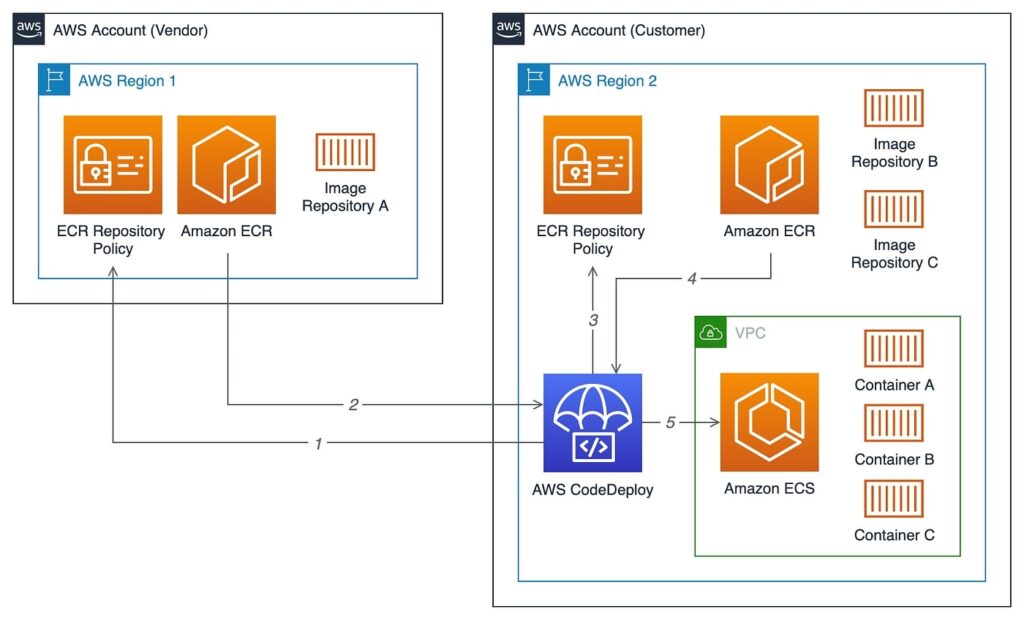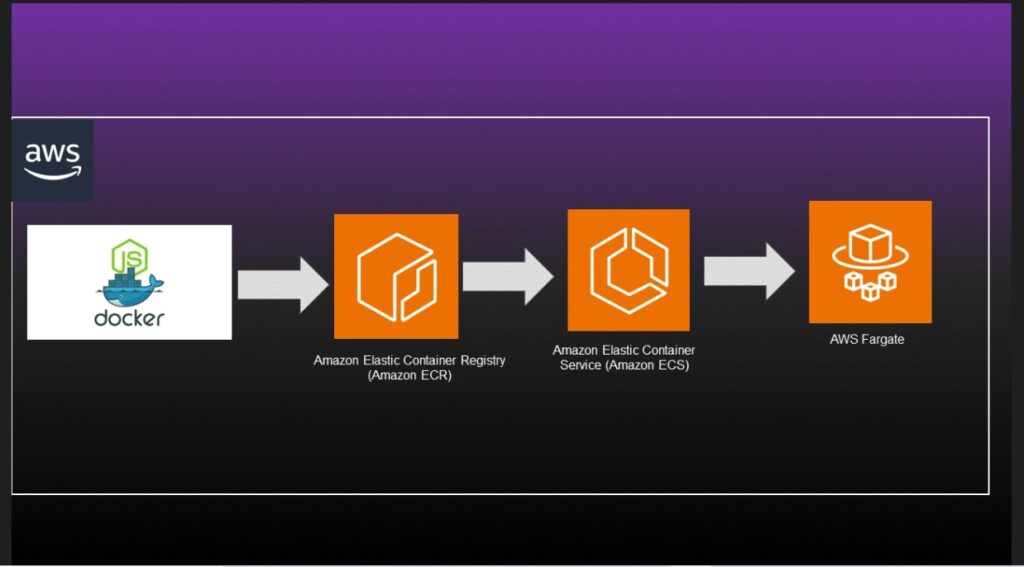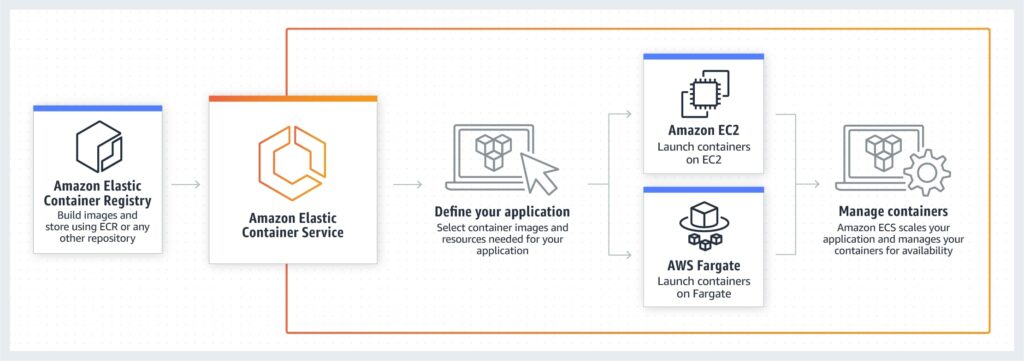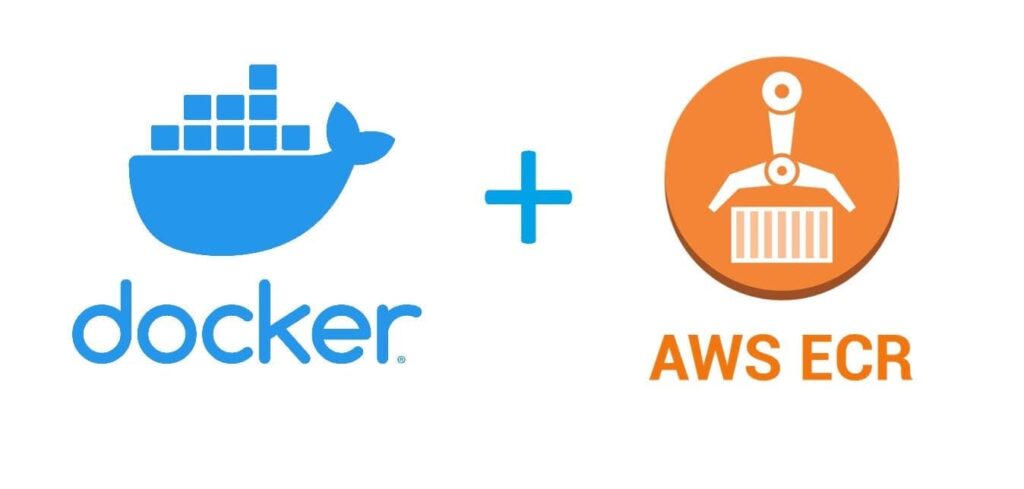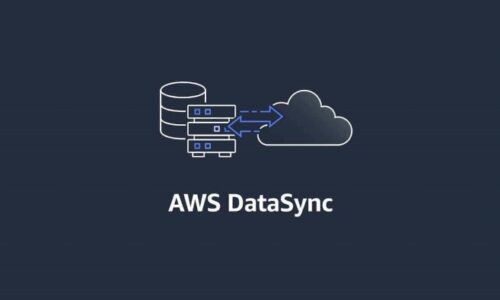In the dynamic global of software program development, Docker containerization has emerged as a game-changer, allowing developers to package deal applications and their dependencies into isolated bins. However, managing and deploying those bins efficiently calls for a reliable box photograph registry. This is where Amazon Elastic Container Registry (ECR) steps in, imparting a secure, scalable, and AWS-controlled answer for storing and deploying Docker container photos.
Understanding Amazon Elastic Container Registry (ECR):
Amazon Elastic Container Registry (ECR) is a cornerstone carrier within Amazon Web Services (AWS), designed to address the challenges of storing, coping with, and deploying Docker container pictures in cloud-based total environments. Let’s delve into the core elements that define the essence and motive of Amazon ECR.
Amazon ECR can be succinctly described as a completely managed Docker container registry service furnished via AWS. It serves as a steady and scalable repository for storing, dealing with, and retrieving Docker images, permitting builders to seamlessly integrate containerized programs into their workflows. ECR operates on the principles of reliability, accessibility, and safety, ensuring that box pictures are without problems available for deployment whilst keeping the very best requirements of statistics safety.
Purpose:
The number one purpose of Amazon ECR is to simplify the complexities associated with containerized utility development and deployment. Here are key factors that outline its reason:
- Secure Container Image Storage: ECR presents a dedicated and secure repository for storing Docker container photos, making sure statistics privateness and protection in opposition to unauthorized access.
- Seamless Integration with AWS Services: Integrated with Amazon Elastic Container Registry, ECR streamlines the improvement-to-production workflow, taking into account green deployment and orchestration of containerized applications.
- Private Repositories with IAM Support: Supports private repositories with resource-based total permissions with the use of AWS IAM, permitting great-grained get right of entry to control field pictures.
- Fast and Secure Image Pulling: Ensures rapid and secure pulling of field images, optimizing the general development and deployment workflow.
- Scalable and Reliable AWS-Managed Service: Operates as a completely managed provider within the AWS ecosystem, imparting scalability and reliability without manual intervention.
Integration with Amazon Elastic Container Service (ECS):
- Unified Container Ecosystem: ECR and ECS function as crucial additives inside AWS’s field atmosphere, supplying a unified environment for containerized programs.
- Simplified Deployment Workflows: ECR seamlessly integrates with ECS, simplifying the deployment procedure for containerized packages and minimizing guide interventions.
- Efficient Resource Utilization: ECS optimizes useful resource usage with the aid of intelligently distributing containers throughout a cluster of EC2 instances, complementing ECR’s position as a container picture repository.
- Scalability and Compatibility: Together, ECR and ECS offer a scalable answer for containerized programs, helping dynamic scaling and compatibility with each EC2 instance and AWS Fargate.
- Streamlined Task Definitions: Task definitions in ECS can reference ECR repositories directly, streamlining the affiliation of bins with particular photographs at some point of deployment.
Simplifying Development to Production Workflow:
- Centralized Image Management: ECR serves as a centralized repository for Docker field pics, streamlining photograph garage, retrieval, and model management.
- Integration with CI/CD Pipelines: ECR seamlessly integrates into non-stop integration and non-stop deployment (CI/CD) pipelines, automating the construction, taking a look at, and installation methods.
- Agile Development Practices: Amazon Elastic Container Registry helps agile improvement by supplying a reliable and scalable infrastructure for managing field photos, allowing brief iterations and updates.
- Consistent Development Environments: Ensures consistency across development environments by imparting a common registry for all field images, improving collaboration and synchronization.
- Immutable Infrastructure Approach: ECR promotes the use of immutable infrastructure, where as soon as a photo is driven, it stays unchanged, ensuring a regular and reproducible deployment environment.
Key Features of Amazon Elastic Container Registry (ECR):
Secure Storage of Docker Container Images:
Description: ECR prioritizes the security of box photographs, supplying a dedicated and steady repository for storing sensitive application components.
Benefits:
- Ensures records privateness and safety against the unauthorized right of entry.
- Mitigates the danger of protection breaches and statistics leaks.
- Fulfills compliance requirements for handling touchy statistics.
Scalable and Reliable AWS-Managed Container Image Registry:
Description: ECR operates as a fully managed carrier within the AWS surroundings, providing scalability and reliability without the want for manual intervention.
Benefits:
- Automatically scales to accommodate varying workloads.
- Reduces operational overhead using leveraging AWS’s managed infrastructure.
- Provides a reliable foundation for web hosting field images.
Encryption and Compression of Images at Rest:
Description: Amazon Elastic Container Registry encrypts and compresses box snapshots at rest, ensuring both security and speed while pulling pictures.
Benefits:
- Enhances security with the aid of encrypting saved pictures, and safeguarding in opposition to unauthorized admission.
- Improves retrieval performance by compressing pictures, and minimizing transfer instances.
- Complies with safety quality practices for statistics protection.
Support for Private Repositories with Resource-Based Permissions Using AWS IAM:
Description: ECR supports the advent of personal repositories, permitting builders to control and get admission to using AWS Identity and Access Management (IAM).
Benefits:
- Enables fine-grained admission to manipulate field pictures.
- Ensures that the most effective authorized customers and services can pull and push photographs.
- Facilitates secure collaboration within improvement groups.
Fast and Secure Image Pulling:
Description: ECR ensures that pulling field snapshots is fast and secure, optimizing the overall improvement and deployment workflow.
Benefits:
- Reduces latency in the course of photograph retrieval, enhancing utility performance.
- Supports green continuous integration and deployment methods.
- Contributes to a seamless personal level for cease-customers interacting with containerized applications.
Setting Up Amazon Elastic Container Registry (ECR):
Creating an ECR Repository in AWS CloudFormation:
- Logging in to the Console: Open the AWS Management Console and navigate to the Amazon ECR provider.
- Creating a Stack: Initiate the process with the aid of growing a new AWS CloudFormation stack. This may be achieved via the AWS Management Console or using AWS CLI instructions.
- Selecting a Stack Template: Choose a CloudFormation stack template that aligns together with your unique requirements. AWS gives several templates catering to distinctive use cases.
- Specifying the Stack Name and Parameters: Define the stack call and input the vital parameters as in keeping with your project’s desires. Parameters may additionally consist of info such as repository names, photograph scanning configurations, and different settings.
- Setting Stack Options: Configure additional alternatives to personalize your ECR setup. This might also encompass specifying useful resource tags, defining AWS Identity and Access Management (IAM) roles, and choosing advanced settings on your repository.
- Creating an EC2 Key Pair: As part of the setup technique, create an EC2 key pair to beautify the safety of your box registry. This key pair could be used for authentication purposes.
Using the get-login-password Command for Authentication:
To streamline the authentication process for Docker clients, you can use the get-login-password command. This command outputs a token that can be used to authenticate your Docker purchaser to the Amazon Elastic Container Registry.
- Aws ecr get-login-password –region <your-region> | docker login–username AWS –password.stdin <your-account-id>.dkr.ecr.<your-region>.amazonaws.Com
- Replace <your-region> and <your-account-id> together with your AWS location and account ID, respectively.
Additional Configuration Options:
- Lifecycle Policies: Configure lifecycle regulations to control the retention and deletion of old pics robotically. This allows for optimizing garage utilization and ensures that only relevant pix are retained.
- Repository Settings: Adjust repository settings, which include testing on the rush for photo vulnerability scanning, to align together with your protection and compliance necessities.
- Access Control with IAM: Fine-tune access control with the use of AWS IAM rules. Define roles and permissions to manipulate who can carry out movements to your ECR repository.
Creating an EC2 Key Pair:
While growing a CloudFormation stack, you may want to create an EC2 key pair. This key pair enhances protection by permitting steady entry to EC2 times jogging your containerized applications.
Verification and Testing:
After the setup, affirm the successful introduction of your ECR repository. Push a Docker picture to the repository and make sure that the image is on the market and practical.
Benefits of Using Amazon Elastic Container Registry (ECR)
Fast and Secure Image Pulling:
- Benefit: ECR ensures that pulling box pics is rapid and secure, optimizing the overall improvement and deployment workflow.
- Explanation: By encrypting and compressing pictures at rest, ECR facilitates brief and efficient image retrieval. This now not only complements the velocity of software deployment but additionally guarantees that pix is securely transferred, contributing to a seamless and stable consumer experience.
Highly Available and Scalable Architecture:
- Benefit: ECR operates with an extraordinarily available and scalable architecture, ensuring accessibility and overall performance even in dynamic environments.
- Explanation: The scalable nature of ECR allows it to evolve to various workloads, supplying developers with dependable admission to container photos. This guarantees that programs can scale seamlessly, meeting the needs of fluctuating consumer loads without compromising on availability.
Streamlined Development and Deployment Processes:
- Benefit: Integration with Amazon Elastic Container Service (ECS) streamlines the improvement of manufacturing workflow.
- Explanation: ECR’s integration with ECS creates a cohesive surrounding where builders can be conscious of constructing applications, leaving the complexities of image management and deployment to the AWS services. This streamlining hurries up the development lifecycle and minimizes guide interventions.
Support for Private Repositories with AWS IAM:
- Benefit: ECR supports personal repositories with useful resource-based permissions for the usage of AWS Identity and Access Management (IAM).
- Explanation: This function guarantees that best-authorized users and services can access and interact with precise repositories. It enhances security and enables high-quality-grained management over who can push and pull photos, making it suitable for a huge variety of use instances, along with those with stringent compliance requirements.
Secure Storage of Docker Container Images:
- Benefit: ECR offers a stable repository for storing Docker field pix.
- Explanation: The stable storage in ECR protects sensitive software additives from unauthorized entry. With encryption at relaxation and compliance with safety best practices, ECR establishes safe and managed surroundings for storing valuable container images.
Best Practices for Optimizing Amazon Elastic Container Registry (ECR)
Image Optimization Techniques:
Regularly Prune Unused Images:
Best Practice: Implement a regular timetable to prune and cast off unused or outdated pix.
Benefits:
- Reduces garage costs with the aid of removing useless pictures.
- Ensures that the most effective applicable and up-to-date pix are retained.
Use Multi-Stage Builds:
Best Practice: Employ multi-degree Docker builds to decrease the dimensions of the final photograph.
Benefits:
- Reduces photograph size, enhancing efficiency in photo transfer and deployment.
- Minimizes the attack surface by excluding pointless additives.
Leverage Build Cache:
Best Practice: Leverage Docker build cache effectively to speed up the next builds.
Benefits:
- Accelerates construct instances using reusing previously built layers.
- Optimizes improvement workflows by keeping off needless rebuilds.
Resource Management Tips:
Optimize Repository Permissions:
Best Practice: Fine-song repository permissions for the usage of AWS IAM roles to ensure that the simplest legal customers have entry.
Benefits:
- Enhances security with the aid of proscribing gets admission to precise roles or people.
- Allows for granular manipulation over photo repository moves.
Implement Image Lifecycle Policies:
Best Practice: Set up lifecycle rules to manipulate the retention and deletion of vintage pix mechanically.
Benefits:
- Optimizes storage utilization using eliminating outdated pics.
- Reduces guide intervention in photograph management.
Monitor and Analyze Image Usage:
Best Practice: Implement monitoring gear to song photograph utilization, pulls, and vulnerability scanning consequences.
Benefits:
- Provides insights into picture reputation and allows optimized garage.
- Enhances security via staying knowledgeable about ability vulnerabilities.
Monitoring and Troubleshooting Strategies:
Set Up CloudWatch Alarms:
Best Practice: Configure CloudWatch alarms to display repository metrics, together with image push charges and repository size.
Benefits:
- Enables proactive responses to capacity problems.
- Facilitates efficient troubleshooting with the aid of identifying bottlenecks.
Regularly Review AWS CloudTrail Logs:
Best Practice: Regularly overview AWS CloudTrail logs to tune API calls associated with Amazon Elastic Container Registry.
Benefits:
- Enhances security by identifying and responding to unauthorized entry.
- Facilitates auditing and compliance efforts.
Security Best Practices:
Enable Image Scanning:
Best Practice: Enable picture scanning on push to become aware of and deal with vulnerabilities.
Benefits:
- Enhances the safety of deployed programs by figuring out capability dangers.
- Allows for proactive mitigation of vulnerabilities earlier than deployment.
Implement Cross-Account Image Sharing with Resource Policies:
Best Practice: Use useful resource guidelines to percentage pics securely across AWS debts.
Benefits:
- Facilitates collaboration across different AWS bills.
- Ensures secure image sharing with well-defined admission to controls.
Additional Tips:
- Tagging Strategies: Implement a strong tagging method for field pics in ECR to beautify the corporation and simplify photo management. This aids in monitoring versions and applying lifecycle guidelines correctly.
- Webhooks for Automation: Utilize Amazon Elastic Container Registry webhooks to automate methods induced through image lifecycle events. This can consist of triggering builds or deployments in response to photograph pushes, improving automation, and reducing manual efforts.
- Optimize IAM Roles: Fine-song IAM roles and permissions for steady access to ECR repositories. Regularly evaluate and update permissions primarily based on the precept of least privilege to keep a steady environment.
- Cost Optimization with Lifecycle Policies: Leverage lifecycle guidelines now not only for protection but also for price optimization. Automatically take away obsolete photos to control storage expenses efficiently.
- Cross-Region Replication: Consider pass-place replication for ECR to decorate availability and catastrophe restoration abilities. This ensures that images are available in a couple of areas, decreasing latency and growing reliability.
Conclusion:
In the end, Amazon Elastic Container Registry (ECR) emerges as a cornerstone inside the realm of containerization, presenting a stable, scalable, and seamlessly incorporated answer in the AWS ecosystem. With functions like secure picture garage, integration with Amazon ECS, and aid for non-public repositories, ECR streamlines the improvement-to-production workflow. Its blessings, along with speedy and stable image pulling, scalability, and AWS-managed reliability, function as a favored desire for Docker container image management.
By following best practices for optimization, builders can in addition decorate the performance and protection in their containerized packages. As businesses continue to embrace containerization, Amazon Elastic Container Registry (ECR) stands as a critical tool, empowering developers to innovate with confidence in dynamic and agile cloud surroundings.
FAQs:
Q1: What is Amazon Elastic Container Registry (ECR)?
A: Amazon Elastic Container Registry (ECR) is a controlled Docker container registry service furnished through Amazon Web Services (AWS). It allows builders to safely store, manipulate, and install Docker container photographs. ECR is incorporated with AWS services, which includes Amazon Elastic Container Service (ECS), streamlining the development-to-production workflow.
Q2: How does ECR ensure the safety of field pictures?
A: ECR employs numerous security features, consisting of encryption and compression of snapshots at relaxation. It also helps personal repositories with aid-based total permissions using AWS Identity and Access Management (IAM). Image scanning on push identifies vulnerabilities, enhancing average protection. ECR’s stable architecture guarantees that container photos are stored and transferred in a way that prioritizes data safety.
Q3: Can Amazon Elastic Container Registry be used on the side of AWS ECS?
A: Yes, ECR is seamlessly included with Amazon Elastic Container Service (ECS). This integration simplifies the improvement-to-production workflow for containerized applications. Developers can without problems push Docker pictures to ECR, and ECS can pull these pictures immediately from ECR for green deployment and orchestration.
Q4: How can I optimize my utilization of Amazon ECR?
A: Best practices for optimizing ECR utilization consist of ordinary pruning of unused pics, using multi-stage builds to limit photograph size, putting in place lifecycle guidelines for image retention, and monitoring picture usage with CloudWatch. It’s additionally encouraged to enable picture scanning for vulnerabilities and frequently review AWS CloudTrail logs for security tracking.
Q5: What benefits does Amazon Elastic Container Registry offer for developers?
A: ECR offers fast and secure picture pulling, ensuring efficient deployment workflows. Its tremendously large and scalable structure, integrated with AWS-managed offerings, reduces operational overhead for developers. ECR’s assistance for personal repositories with IAM allows for stable collaboration, at the same time as features like encryption, compression, and photo scanning contribute to a sturdy and secure containerization environment.
READ MORE: How to Turn on Instagram Dark Mode?

